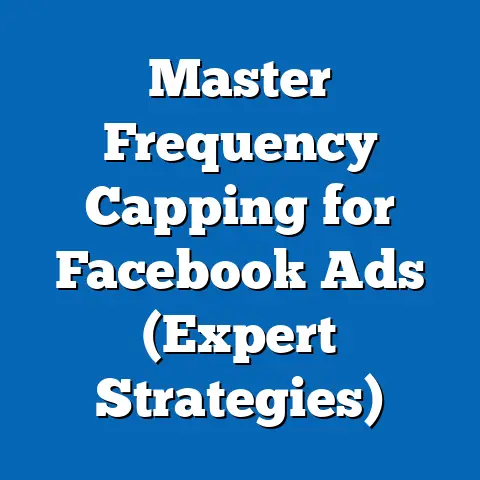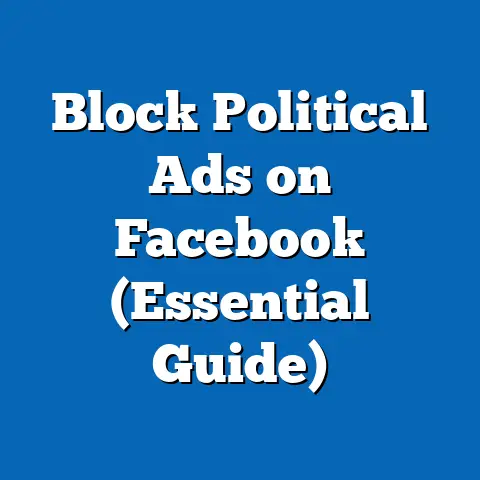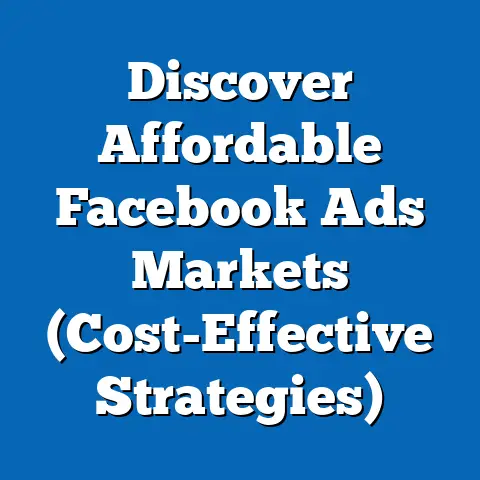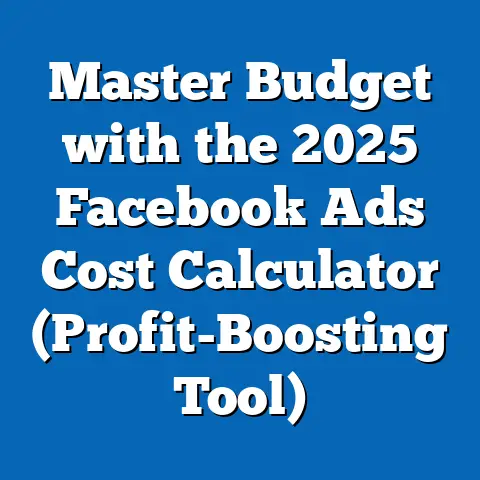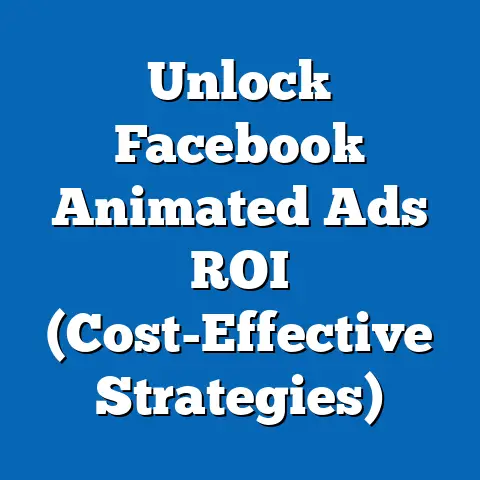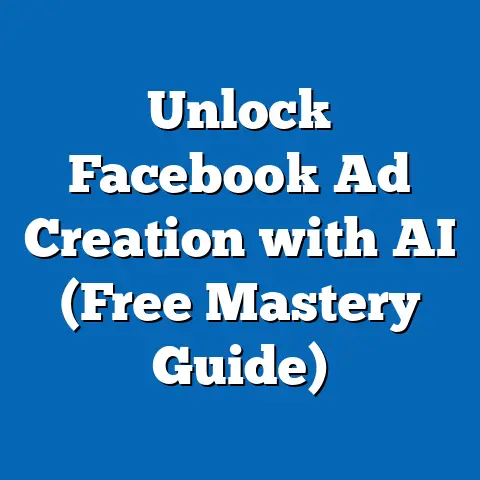Master Facebook Mockups (Unlock Creative Ad Strategies)
The world of advertising is constantly evolving, and today, it’s not just about grabbing attention – it’s about grabbing the right attention. Modern consumers are increasingly savvy, and they’re looking for brands that align with their values. One of the biggest shifts I’ve witnessed in recent years is the rise of eco-consciousness. People want to support businesses that are doing their part for the planet, and they expect to see that reflected in their marketing.
That’s where Facebook advertising comes in. With its massive reach and sophisticated targeting capabilities, Facebook offers an incredible platform for connecting with these eco-conscious consumers. But simply having a Facebook page and running a few ads isn’t enough. You need to stand out from the crowd, and that requires creative, compelling visuals that tell your brand’s story and showcase your commitment to sustainability.
This is where Facebook mockups become your secret weapon. They’re not just pretty pictures; they’re a powerful tool for visualizing your ad strategies, testing different concepts, and ultimately, creating campaigns that resonate with your target audience. I’ve personally seen how a well-crafted mockup can transform a mediocre ad into a high-performing one.
In this article, I’m going to take you on a deep dive into the world of Facebook mockups. We’ll explore what they are, why they’re important, and how you can use them to unlock your creative potential and create Facebook ad campaigns that are not only effective but also aligned with your brand’s values. Get ready to learn how to master Facebook mockups and take your advertising to the next level!
Understanding Facebook Mockups
Definition and Importance
So, what exactly is a Facebook mockup? Simply put, it’s a visual representation of how your Facebook ad will look. Think of it as a blueprint or a preview. It allows you to see the ad in its intended context – within the Facebook newsfeed, on the right-hand column, or in other placements.
I remember the first time I encountered mockups. I was working on a campaign for a local coffee shop, and we had a great image of their latte art. We threw it into a simple ad and launched it. The results were… underwhelming. It wasn’t until I created a mockup that I realized the ad looked completely lost in the busy newsfeed. The mockup highlighted the need for a stronger headline and a more prominent call to action.
The beauty of a mockup is that it allows you to experiment with different elements – images, text, calls to action, and even the overall layout – before you spend a dime on advertising. It’s a risk-free way to test your ideas and ensure that your ads are visually appealing and effective.
Here’s why mockups are so important in advertising:
- Visualization: They provide a clear picture of how your ad will appear to users.
- Experimentation: They allow you to test different design elements and messaging.
- Efficiency: They save you time and money by identifying potential problems before you launch your campaign.
- Collaboration: They facilitate communication and feedback among team members.
- Strategic Planning: They help you align your ad creative with your overall marketing goals.
The Role of Visuals in Advertising
We live in a visual world. Studies have shown that people process visual information 60,000 times faster than text. In the fast-paced environment of social media, where users are bombarded with content, visuals are your first (and often only) chance to grab their attention.
Think about your own experience scrolling through Facebook. What makes you stop and take notice? It’s usually a striking image or a captivating video. Visuals have the power to evoke emotions, tell stories, and create a lasting impression.
Here are some statistics that highlight the effectiveness of visual content in ads:
- Ads with images get 2.3x more engagement than those without.
- Video ads have a higher click-through rate (CTR) than image ads.
- People are 85% more likely to purchase a product after watching a product video.
I’ve personally seen the impact of strong visuals on campaign performance. In one campaign for a clothing retailer, we A/B tested two ads – one with a professionally shot image of a model wearing the clothes, and the other with a simple product shot. The ad with the professional image generated a 30% higher CTR and a 20% increase in conversions.
Visuals are not just about aesthetics; they’re about connecting with your audience on an emotional level. They’re about telling a story that resonates with them and inspires them to take action.
Types of Facebook Ads
Facebook offers a variety of ad formats to suit different marketing goals. Each format has its own unique specifications and best practices, and mockups can help you optimize your creative for each one.
Here’s a brief overview of the most common Facebook ad types:
- Image Ads: These are the simplest type of ad, featuring a single image and accompanying text. They’re great for showcasing products, promoting events, or driving traffic to your website.
- Video Ads: Video ads are more engaging than image ads and can be used to tell a more compelling story. They’re ideal for brand awareness, product demos, or customer testimonials.
- Carousel Ads: Carousel ads allow you to showcase multiple images or videos in a single ad unit. They’re perfect for highlighting different features of a product, showcasing a collection of items, or telling a story in a series of steps.
- Collection Ads: Collection ads are designed for e-commerce businesses and feature a cover image or video followed by a selection of products. They’re great for driving sales and showcasing your product catalog.
- Instant Experience Ads: Instant Experience ads (formerly known as Canvas ads) are full-screen, mobile-optimized ads that load instantly when clicked. They offer a highly immersive and engaging experience and can be used to tell a brand story, showcase products, or drive conversions.
Mockups are essential for ensuring that your creative looks its best in each ad format. For example, with carousel ads, you’ll want to make sure that each image or video is visually consistent and tells a cohesive story. With Instant Experience ads, you’ll need to carefully plan the layout and flow of the experience to maximize engagement.
Takeaway: Facebook mockups are essential for visualizing, experimenting, and optimizing your ad creative. Understanding the different types of Facebook ads and how mockups can be tailored to each format is crucial for creating effective campaigns.
Creating Effective Facebook Mockups
Now that we understand the importance of Facebook mockups, let’s dive into the practical steps of creating them. The process involves choosing the right tools, understanding design principles, and aligning your mockups with your brand values.
Tools and Software for Mockups
Fortunately, there’s no shortage of tools and software available for creating Facebook mockups. Some are free and easy to use, while others offer more advanced features and customization options. Here are a few of my favorites:
- Canva: Canva is a popular online design tool that’s perfect for creating simple and professional-looking mockups. It offers a wide range of templates, images, and fonts, and it’s incredibly user-friendly. I often recommend Canva to beginners because it’s so easy to pick up and start creating.
- Adobe Photoshop: Photoshop is the industry-standard photo editing software, and it’s a powerful tool for creating highly realistic and detailed mockups. However, it has a steeper learning curve than Canva and requires a subscription.
- Adobe XD: Adobe XD is a user experience (UX) design tool that’s great for creating interactive mockups and prototypes. It allows you to simulate the user experience and test different design flows.
- Figma: Figma is a collaborative design tool that’s similar to Adobe XD but is web-based, making it easier to share and collaborate with team members. It’s a great option for teams that need to work together on mockup creation.
- Smartmockups: Smartmockups is a dedicated mockup generator that offers a wide range of pre-designed templates for Facebook ads and other marketing materials. It’s a quick and easy way to create professional-looking mockups without having to design everything from scratch.
When choosing a tool, consider your budget, your skill level, and your specific needs. If you’re just starting out, Canva or Smartmockups are great options. If you need more advanced features and customization options, Photoshop or Adobe XD might be a better fit.
How to use Canva effectively:
- Sign up for a free account: Canva offers a free plan with plenty of features for creating basic mockups.
- Search for “Facebook Ad” templates: Canva has a wide range of pre-designed templates specifically for Facebook ads.
- Customize the template: Replace the placeholder images and text with your own content.
- Experiment with different fonts and colors: Choose fonts and colors that align with your brand identity.
- Add your logo: Make sure your logo is prominently displayed in the mockup.
- Download your mockup: Canva allows you to download your mockup in various formats, including JPG, PNG, and PDF.
Design Principles for Mockups
Creating effective Facebook mockups is not just about using the right tools; it’s also about understanding basic design principles. Here are a few key principles to keep in mind:
- Color Theory: Colors have a powerful impact on emotions and perceptions. Choose colors that align with your brand identity and evoke the desired feelings in your target audience. For example, blue is often associated with trust and reliability, while green is associated with nature and sustainability.
- Typography: Choose fonts that are easy to read and that reflect your brand’s personality. Use different font sizes and styles to create visual hierarchy and emphasize important information.
- Layout: Create a clear and balanced layout that guides the viewer’s eye through the ad. Use whitespace effectively to avoid clutter and improve readability.
- Imagery: Use high-quality images that are relevant to your product or service. Make sure the images are visually appealing and that they tell a story.
- Call to Action: Include a clear and compelling call to action that tells users what you want them to do. Use action-oriented language and make the call to action button prominent.
I’ve found that studying successful Facebook ads is a great way to learn about effective design principles. Pay attention to the ads that catch your eye and analyze what makes them visually appealing. What colors are they using? What fonts are they using? How is the layout organized?
Here’s an example of a successful Facebook mockup and a breakdown of what makes it effective:
- Visual: A high-quality image of a person using the product in a natural setting.
- Copy: A concise and compelling headline that highlights the benefits of the product.
- Call to Action: A clear and prominent call to action button that encourages users to “Shop Now.”
- Overall Design: A clean and balanced layout that is easy to read and visually appealing.
Aligning Mockups with Brand Values
In today’s world, consumers are increasingly drawn to brands that share their values. If your brand is committed to sustainability, it’s essential to reflect that commitment in your Facebook mockups.
Here are some ways to incorporate your brand’s eco-conscious values into your mockups:
- Use sustainable imagery: Feature images of natural landscapes, eco-friendly products, or people engaged in sustainable activities.
- Highlight your sustainability initiatives: Use your ad copy to showcase your brand’s commitment to sustainability, such as using recycled materials, reducing carbon emissions, or supporting environmental organizations.
- Use eco-friendly colors: Incorporate green, blue, and brown tones to evoke a sense of nature and sustainability.
- Partner with eco-conscious influencers: Collaborate with influencers who are passionate about sustainability to create authentic and engaging content.
- Use sustainable packaging: If you sell physical products, showcase your sustainable packaging in your mockups.
I worked with a local organic food company that wanted to promote their commitment to sustainable farming practices. We created a series of Facebook mockups that featured images of their farm, their farmers, and their organic produce. We also highlighted their use of sustainable farming techniques and their commitment to reducing their environmental impact. The campaign resonated strongly with their target audience and resulted in a significant increase in sales.
Takeaway: Creating effective Facebook mockups involves choosing the right tools, understanding design principles, and aligning your mockups with your brand values. By incorporating eco-conscious elements into your mockups, you can connect with your target audience on a deeper level and build a loyal customer base.
Developing Creative Ad Strategies Using Mockups
Creating beautiful mockups is only half the battle. The real magic happens when you use them to develop creative ad strategies that capture attention, drive engagement, and achieve your marketing goals.
Brainstorming Creative Ideas
Brainstorming is a crucial step in the ad development process. It’s where you generate ideas, explore different concepts, and push the boundaries of your creativity. Mockups can be a valuable tool for brainstorming because they allow you to visualize your ideas and see how they might look in a real-world setting.
Here are some techniques for brainstorming unique ad concepts using mockups:
- Start with your target audience: Who are you trying to reach? What are their interests, needs, and pain points? Use this information to generate ideas that resonate with them.
- Focus on your brand values: What are the core values that define your brand? How can you communicate those values in your ads?
- Explore different ad formats: Experiment with different Facebook ad formats to see which ones work best for your brand and your message.
- Look for inspiration: Browse through other Facebook ads, websites, and social media channels to get ideas. Don’t be afraid to borrow inspiration from others, but make sure you put your own unique spin on it.
- Use a mind map: Create a mind map to visually organize your ideas and explore different connections.
- Don’t be afraid to think outside the box: The best ads are often the ones that are unexpected and unconventional.
Storytelling is a powerful tool in advertising. People are drawn to stories, and they’re more likely to remember and connect with ads that tell a compelling narrative. Mockups can help you illustrate your brand’s narrative and bring your story to life.
For example, if you’re selling a sustainable clothing line, you could create a mockup that tells the story of how your clothes are made, from the organic cotton fields to the finished product. You could also feature images of the people who make your clothes and highlight their commitment to ethical labor practices.
I once worked on a campaign for a travel agency that specialized in eco-tourism. We created a series of Facebook mockups that told the stories of different travelers who had experienced their eco-friendly adventures. Each mockup featured stunning images of the destination, along with a quote from the traveler about their experience. The campaign was incredibly successful, and it helped the travel agency attract a new audience of eco-conscious travelers.
Testing and Iterating on Mockups
Once you’ve created a few mockups, it’s time to put them to the test. A/B testing is a technique that involves creating two versions of an ad (A and B) and showing them to different segments of your audience. By tracking the performance of each ad, you can determine which one resonates best with your target audience.
Here’s how to A/B test your mockups:
- Choose your variables: What elements of your mockup do you want to test? You could test different images, headlines, calls to action, or even the overall layout.
- Create your variations: Create two versions of your mockup, each with a different variation of the element you’re testing.
- Set up your A/B test: Use Facebook Ads Manager to set up your A/B test. Specify your target audience, your budget, and the duration of the test.
- Track your results: Monitor the performance of each ad and track metrics such as CTR, conversion rate, and cost per acquisition (CPA).
- Analyze your data: Once the test is complete, analyze the data to determine which variation performed best.
- Implement your findings: Use the insights from your A/B test to optimize your ad creative and improve your campaign performance.
Gathering and analyzing feedback is also crucial for refining your ad strategies. Don’t be afraid to ask for feedback from your colleagues, your friends, or even your target audience. You can use surveys, focus groups, or even informal conversations to gather feedback on your mockups.
Here are some questions to ask when gathering feedback:
- What is your first impression of the ad?
- What is the main message of the ad?
- Is the ad visually appealing?
- Is the call to action clear and compelling?
- Does the ad resonate with you?
- What could be improved?
Leveraging Trends in Facebook Advertising
The world of Facebook advertising is constantly evolving, and it’s essential to stay up-to-date on the latest trends and best practices. Mockups can help you adapt to these trends and ensure that your ads remain relevant and engaging.
Here are some current trends in Facebook advertising:
- Video Marketing: Video is becoming increasingly popular on Facebook, and video ads are often more engaging than image ads.
- Mobile Optimization: Most Facebook users access the platform on their mobile devices, so it’s essential to optimize your ads for mobile viewing.
- Personalization: Consumers are increasingly expecting personalized experiences, so it’s important to tailor your ads to individual users based on their interests and behaviors.
- Authenticity: Consumers are wary of overly polished and promotional ads, so it’s important to create ads that feel authentic and genuine.
- Interactive Content: Interactive ad formats, such as quizzes, polls, and contests, can be highly engaging and can help you generate leads.
Adapting eco-conscious messaging to align with these trends is crucial for reaching your target audience. For example, you could create a video ad that showcases your sustainable manufacturing processes or a personalized ad that highlights your commitment to reducing your carbon footprint.
Takeaway: Developing creative ad strategies using mockups involves brainstorming unique ideas, testing and iterating on your designs, and leveraging the latest trends in Facebook advertising. By staying creative and adaptable, you can create campaigns that capture attention, drive engagement, and achieve your marketing goals.
Case Studies of Successful Facebook Ad Campaigns
To further illustrate the power of Facebook mockups, let’s take a look at some real-world examples of brands that have successfully used them in their ad campaigns.
Highlighting Eco-Conscious Brands
Here are a few case studies of brands that have effectively integrated eco-friendly messaging and visuals into their Facebook ad campaigns:
- Patagonia: Patagonia is a well-known outdoor clothing company that is committed to sustainability. Their Facebook ad campaigns often feature images of their products being used in nature, along with messages about their commitment to environmental conservation. They effectively use mockups to showcase their brand values and connect with their target audience.
- Allbirds: Allbirds is a footwear company that uses sustainable materials, such as merino wool and eucalyptus trees, to make their shoes. Their Facebook ad campaigns highlight their commitment to sustainability and feature images of their eco-friendly products. They use mockups to visually communicate their brand story and attract eco-conscious consumers.
- Beyond Meat: Beyond Meat is a company that makes plant-based meat alternatives. Their Facebook ad campaigns often feature images of their products being used in delicious recipes, along with messages about the environmental benefits of plant-based diets. They use mockups to showcase their product versatility and appeal to a wider audience.
Analyzing these strategies reveals several common themes:
- Authenticity: These brands are genuine in their commitment to sustainability, and their ads reflect that.
- Visual Storytelling: They use images and videos to tell compelling stories about their products and their brand values.
- Targeted Messaging: They tailor their messaging to appeal to eco-conscious consumers.
- Clear Call to Action: They make it easy for users to learn more about their products and their sustainability initiatives.
Lessons Learned from Successful Campaigns
From these case studies, we can extract several key takeaways that can be applied to other brands:
- Be authentic: Don’t try to fake your commitment to sustainability. Consumers can see through that.
- Tell a story: Use images and videos to tell a compelling story about your brand and your products.
- Target your messaging: Tailor your messaging to appeal to your target audience.
- Make it easy for users to take action: Include a clear call to action that tells users what you want them to do.
- Test and iterate: Continuously test and iterate on your ad creative to improve your campaign performance.
Common pitfalls to avoid when creating Facebook mockups include:
- Using low-quality images: Make sure your images are high-resolution and visually appealing.
- Using cluttered layouts: Keep your layouts clean and balanced.
- Using confusing messaging: Make sure your messaging is clear and concise.
- Ignoring mobile optimization: Optimize your ads for mobile viewing.
- Failing to track your results: Track your campaign performance and make adjustments as needed.
The Future of Facebook Advertising
The future of Facebook advertising is likely to be driven by several factors, including:
- Artificial Intelligence (AI): AI is already playing a significant role in Facebook advertising, and it’s likely to become even more important in the future. AI can be used to automate tasks, personalize ads, and optimize campaign performance.
- Augmented Reality (AR): AR is an emerging technology that allows users to overlay digital content onto the real world. AR can be used to create highly engaging and interactive ad experiences.
- Virtual Reality (VR): VR is another emerging technology that allows users to immerse themselves in a virtual environment. VR can be used to create highly immersive and engaging ad experiences.
- Privacy: Consumers are becoming increasingly concerned about their privacy, and Facebook is responding by implementing stricter privacy controls. Advertisers will need to adapt to these changes and find new ways to target their ads.
Brands can continue to innovate while remaining committed to sustainability by:
- Embracing new technologies: Experiment with AI, AR, and VR to create innovative and engaging ad experiences.
- Prioritizing privacy: Respect user privacy and be transparent about how you collect and use data.
- Focusing on value: Provide value to users by creating ads that are informative, entertaining, or useful.
- Building relationships: Focus on building long-term relationships with your customers rather than just trying to make a quick sale.
Takeaway: Case studies of successful Facebook ad campaigns highlight the importance of authenticity, visual storytelling, targeted messaging, and a clear call to action. By learning from these examples and avoiding common pitfalls, you can create Facebook ad campaigns that are both effective and aligned with your brand values. The future of Facebook advertising is likely to be driven by AI, AR, VR, and a greater emphasis on privacy, so brands will need to adapt to these changes to remain competitive.
Conclusion
In this article, we’ve explored the power of Facebook mockups and how they can be used to unlock creative ad strategies. We’ve discussed what mockups are, why they’re important, how to create them, and how to use them to develop effective ad campaigns.
We’ve also examined case studies of brands that have successfully integrated eco-friendly messaging and visuals into their Facebook ad campaigns, and we’ve identified key takeaways that can be applied to other brands.
Mastering Facebook mockups is essential for brands that want to connect with eco-conscious consumers and showcase their commitment to sustainability. By effectively utilizing mockups, you can create visually appealing ads that tell a compelling story, resonate with your target audience, and drive results.
The future of advertising is about more than just selling products; it’s about building relationships, sharing values, and making a positive impact on the world. By embracing creativity and sustainability, you can create a future where advertising is not just effective but also ethical and responsible. So, go forth, create amazing mockups, and make a difference!

